
Bruce Lee was a Hong Kong and American martial artist, martial arts instructor, actor, director, screenwriter, producer, and philosopher. He was the founder of Jeet Kune Do, a hybrid martial arts philosophy drawing from different combat disciplines that is often credited with paving the way for modern mixed martial arts (MMA). Lee is considered by critics, media, and other martial artists to be the most influential martial artist of all time and a pop culture icon of the 20th century, who bridged the gap between East and West. He is credited with promoting Hong Kong action cinema and helping to change the way Asians were presented in American films.
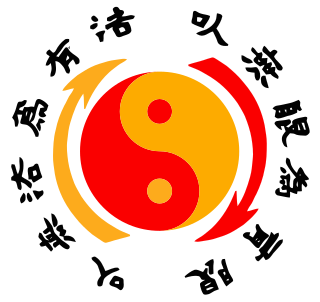
Jeet Kune Do is an eclectic martial arts philosophy heavily influenced and adapted by the personal philosophy and experiences of martial artist Bruce Lee.

Dan Inosanto is an American martial arts instructor. Inosanto is an authority on Jeet Kune Do and Filipino Martial Arts and Pencak Silat.

Dragon: The Bruce Lee Story is a 1993 American biographical drama film directed by Rob Cohen. The film stars Jason Scott Lee, with a supporting cast including Lauren Holly, Nancy Kwan and Robert Wagner. The film follows the life of actor and martial artist Bruce Lee (Jason) from his relocation to the United States from Hong Kong to his career as a martial arts teacher, and then as a television and film actor. It also focuses on the relationship between Bruce and his wife Linda Lee Cadwell, and the racism to which Bruce was subjected.
Shannon Emery Lee is an American actress, martial artist, and businesswoman. She is the only living child of martial artist Bruce Lee and retired martial arts teacher Linda Lee Cadwell, the granddaughter of Cantonese opera singer Lee Hoi-chuen, and the younger sister of actor Brandon Lee.

Linda Lee Cadwell is an American teacher, martial artist, and writer. She is the author of the Bruce Lee biography Bruce Lee: The Man Only I Knew, upon which the film Dragon: The Bruce Lee Story is based, as well as the founder, a former trustee of, and an unpaid advisor of the Bruce Lee Foundation. Lee Cadwell is the widow of martial arts master and actor Bruce Lee (1940–1973) and the mother of actor Brandon Lee (1965–1993) and actress Shannon Lee.

Bruce Lee: A Warrior's Journey is a 2000 documentary on the martial artist Bruce Lee and Jeet Kune Do. The documentary includes never-before-seen behind-the-scenes footage of Bruce Lee's life, as well as parts of the original footage of his incomplete film Game of Death, which had been left out of the film.
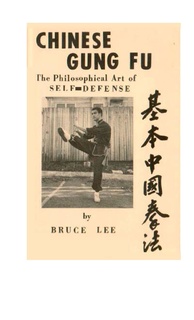
Chinese Gung Fu: The Philosophical Art of Self-Defense is a book written by Bruce Lee expressing his martial arts philosophy and viewpoints. It describes his early style of gung fu which was based heavily on Wing Chun. This was before the development of his unique style of martial arts called Jeet Kune Do in the late 1960s.
Tim Tackett is a martial arts instructor and author from Redlands, California who runs a non-profit group dedicated to preserving Bruce Lee's art of Jeet Kune Do.
Jesse Raymond Glover was an American martial artist. He was Bruce Lee's first student and first assistant instructor in the United States. He met Lee in 1959, as they both attended Edison Technical College and practiced judo with Lee. Glover was a psychology major and a champion judoka. The character Jerome Sprout in the 1993 film Dragon: The Bruce Lee Story was based on Glover.
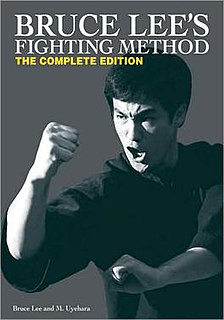
Bruce Lee's Fighting Method is a book of volumes covering Bruce Lee's martial arts abilities of the Jeet Kune Do movement. The book is available as a single hardcover volume or a series of four paperback volumes. The text describes Bruce Lee's Kung Fu fighting techniques, philosophy and training methods. This book was originally written in 1966 by Bruce Lee. However, Lee decided not to publish this work as he feared that instructors would use the fighting knowledge in this text to promote themselves. In 1978, after Bruce Lee's death, his widow Linda Lee Cadwell decided to make available the information on her husband's work. Lee's death changed the perspective of releasing the information that Bruce Lee himself had vacillated about. The book was published with the help of Mitoshi Uyehara. Uyehara was the founder and owner of Black Belt Magazine. During the early years of the publication, Uyehara served as the publisher. Bruce Lee contributed many articles to the publication during the 1960s and a friendship ensued between the two men. Uyehara, a martial artist in his own right, was a key personage in arranging Lee's material for publication.
The Bruce Lee Library is composed of books written by or about Bruce Lee (1940-1973), famous Hongkongese and American martial artist, philosopher, author, instructor of martial arts, actor, filmmaker and screenwriter.
John R. Little is a writer and bodybuilding advocate. A native of Canada, Little is a writer in the fields of martial arts, bodybuilding and physical conditioning.
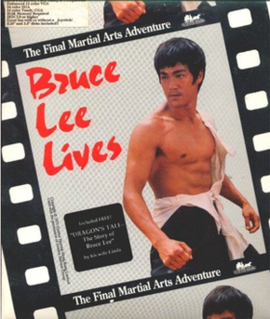
Bruce Lee Lives: The Fall of Hong Kong Palace, known simply as Bruce Lee Lives, is a 1989 video game with software developed and published by The Software Toolworks for MS-DOS and a promotional website developed and published by the creators of the Kung Faux television series and Bento Box Entertainment in homage to the video game's aesthetic.
Martial artist and actor Bruce Lee has been subject to extensive media coverage.

James Yimm Lee was an American martial arts pioneer, teacher, author, and publisher. James Lee is known for being a mentor, teacher and friend of Bruce Lee.
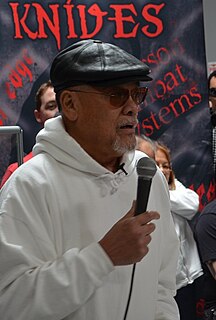
Richard Bustillo was an American martial arts instructor from Hawaii who was a student of the late Bruce Lee and an authority on Jeet Kune Do Concepts and Filipino Martial Arts.
Yüksel Yılmaz is a sijo, writer, economist, founded of JKD Kulelkavido, general president.

James W. DeMile was an American martial artist and author. He was among the first group of students of Bruce Lee, whom he met in 1959, as they both attended Edison Technical School. In 1963, DeMile appeared in Lee's only book, The Philosophical Art of Self Defense. He was an inductee in the AMAA Who's Who in the Martial Arts Hall of Fame and Black Belt Magazine Hall of Fame.

Salem Assli was a French-American internationally acclaimed martial artist, instructor, author and researcher best known as the first B.F. Savate instructor in the US. He also continued the development of martial arts on five continents and is Head of the French association of Jeet Kune Do and Filipino Kali.














